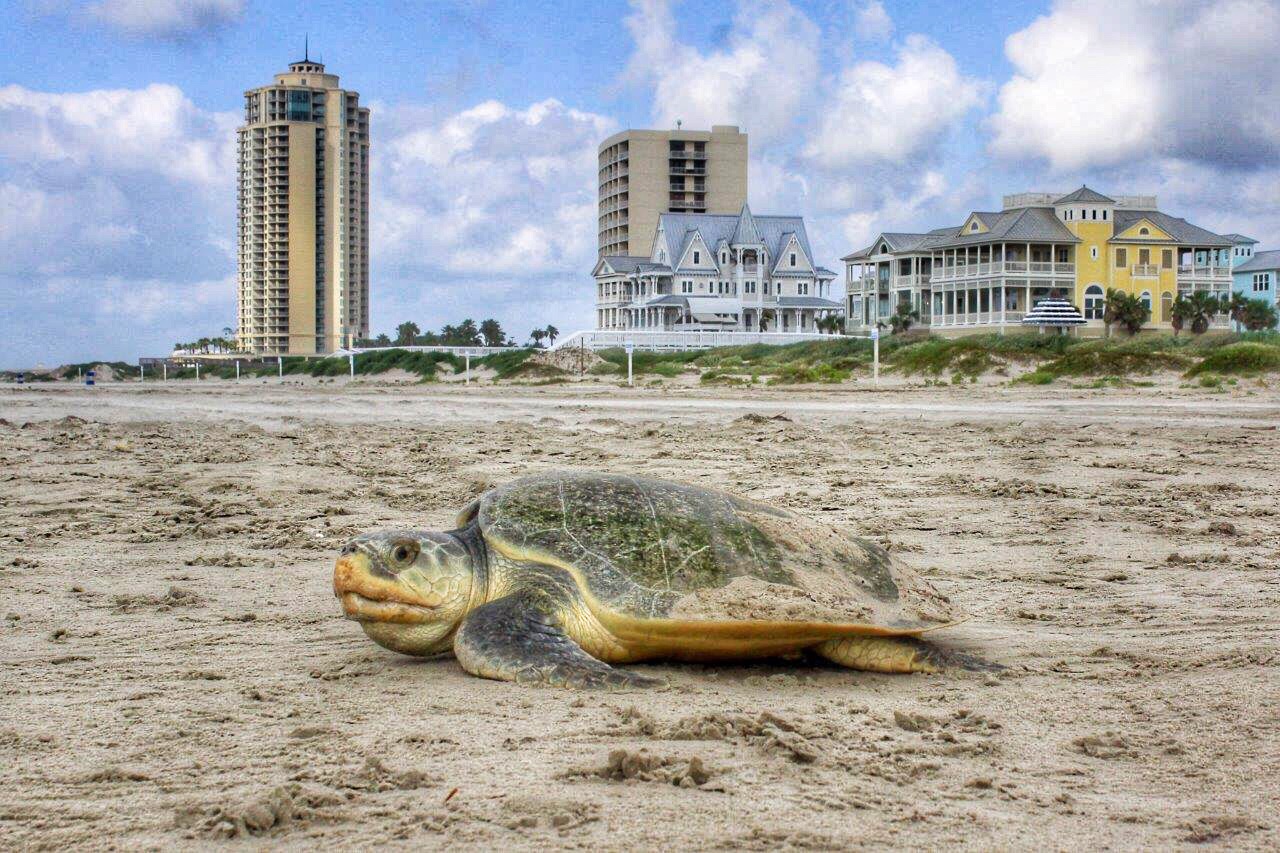With the arrival of warmer temperatures we begin our annual migration to our beautiful Texas’ beaches. While most of us are soaking up the sun and frolicking in the waves, another visitor is also making their annual migration to our beaches. But their goal is to continue their life’s journey.
The Texas state sea turtle, the Kemp’s ridley, nests on Texas beaches from April through mid-July. This species of turtle is the smallest and most critically endangered sea turtle. Unlike other sea turtles, the Kemp’s ridley typically nest during the day and will lay about 100 eggs in each nest.
During the 2017 nesting season, 353 nests were found along the Texas coast.
Everyone has the opportunity to contribute to the conservation of this endangered sea turtle simply by looking for signs of nesting females.
If you are fortunate, you may see a female emerging from the gulf and crawling ashore to lay her eggs in the base of the dune. Immediately call 1-866-TURTLE-5 to report the turtle and a biologist will respond to your call. Please do not disturb the turtle in anyway, but protect her by keeping people, dogs and vehicles a safe distance from her. Until the biologist arrives, please take photos of the turtle, the nesting activity, and the crawl. Do not attempt to hold the female on the beach.
The second sign you may look for are her tracks in the sand. The turtle’s crawl pattern looks like alternating comma shaped claw marks with a smooth belly drag in the center and possibly a tail mark. You may discover two sets of tracks, one incoming and one outgoing. If you are lucky to discover the tracks please call 1-866-TURTLE-5 to report your finding.
We are so fortunate to share the Gulf of Mexico with such a magnificent, long-lived creature, and with your help we will be able to protect the Kemp’s ridley for many, many more years. Enjoy your visit to our beaches, and I hope you will have the exceptional opportunity of discovering a nesting sea turtle.




